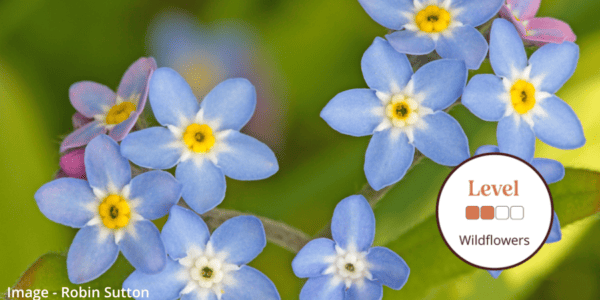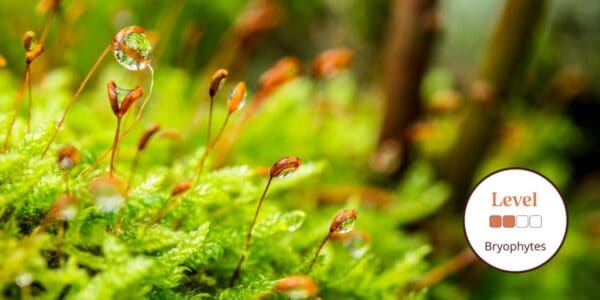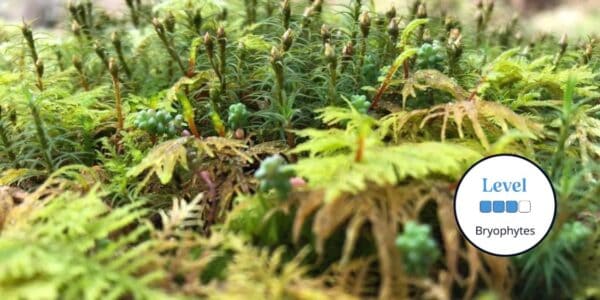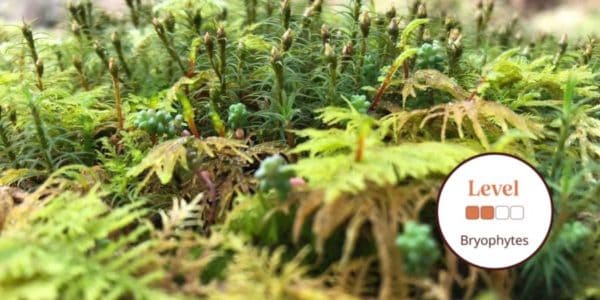This course will provide an introduction to the skills that are needed to identify bryophytes.
Field and laboratory sessions will involve the use of a field key and keys using microscopic characters to identify common species from a variety of habitats. This course is suitable for beginners and those with a limited knowledge of bryophyte identification.
Accreditation
This is one of a series of courses (Units) run jointly with Manchester Metropolitan University contributing to the MSc Biological Recording and Ecological Monitoring and the Postgraduate Certificate in Biological Recording. To gain university credits you must be registered for the programme in advance of this course. For further details please contact:
Department of Natural Sciences, Manchester Metropolitan University, (Shrewsbury Office). E-mail: [email protected]
The Unit will be assessed through, for example, identification tests, survey reports, field journals, production of keys, essays or other forms of assessment.
The course gives you the opportunity to immerse yourself in a new subject, acquire novel skills.
- Each day will run 10am – 5pm each day.
- See the ‘Example Timetable’, ‘What’s Included’ and ‘Before You Attend’ sections below for more information about this course.
- Please email [email protected] if you have any questions.
If you are aged 18-25, you are eligible for a £50 discount thanks to the Generation Green project, click here to find out more.
Tutor: Nick Law
Nick Law is an experienced field botanist currently employed as a Principal Ecologist with FPCR Environment and Design Ltd. Nick’s interests include vascular plants and bryophytes. He holds a Botanical Society of Britain and Ireland (BSBI) Level 6 Field Identification Skills Certificate (FISC) and is the British Bryological Society Regional Recorder for Warwickshire.Please note, the fee is for tuition, packed lunch and refreshments only.
If you would like to book accommodation and an evening meal at FSC Preston Montford, please email [email protected].
Example Timetable
Please arrive at the Centre between 15:00pm and 17:00pm on the first day of your course in good time for a welcome introduction and evening meal usually 18.30pm, after which the course commences with a short evening session.
On Friday evening there will be an initial introductory talk and short practical session. The rest of the weekend will be a mixture of fieldwork (with guidance on how to collect, observe and record in the field) and laboratory sessions and short talks.
On Monday afternoon there will be a classroom-based test (optional for those not studying for accreditation).
What's Included
Bursaries and Subsidies
If you are aged 18-25, you are eligible for a £50 discount thanks to the Generation Green project, click here to find out more.
Before You Attend
What to Bring
- Warm clothing, waterproofs and stout footwear for fieldwork.
- Simple collecting equipment such as a field bag and a penknife.
- A x20 hand lens.
- A4 scrap paper to fold into packets.
- A vacuum flask and a bag or a box for carrying a packed lunch.
- A microscope if you have one and would prefer to use your own during the weekend.
Useful Books
Any books you have on mosses and liverworts, particularly:
- Atherton, I., Bosanquet, S. and Lawley, M. (eds.). (2010). Mosses and Liverworts of Britain and Ireland – a field guide. British Bryological Society.
- Frey. W., Frahm. J. – P., Fischer, E. and Lobin. W. (2006). The Liverworts, Mosses and Ferns of Europe – English edition revised and edited by T.L. Blockeel. Harley Books: Colchester.
- Paton. J.A. (1999). The Liverwort Flora of the British Isles. Harley Books: Colchester.
- Smith. A.J.E. (1991). The Liverworts of Britain and Ireland. Cambridge University Press: Cambridge.
- Smith. A.J.E. (2004). The Moss Flora of Britain and Ireland – Second Edition. Cambridge University Press: Cambridge. (Note. Original printing of this second edition has many typographical errors so would recommend second printing of the second edition).
- Watson. E.V. (1981). British Mosses and Liverworts – 3rd Edition. Cambridge University Press: Cambridge.
Sorry this course has ended




